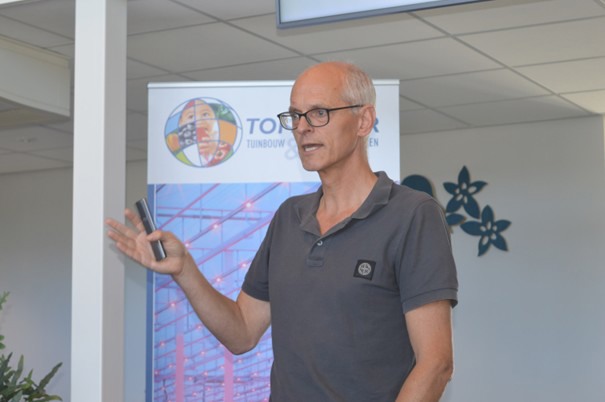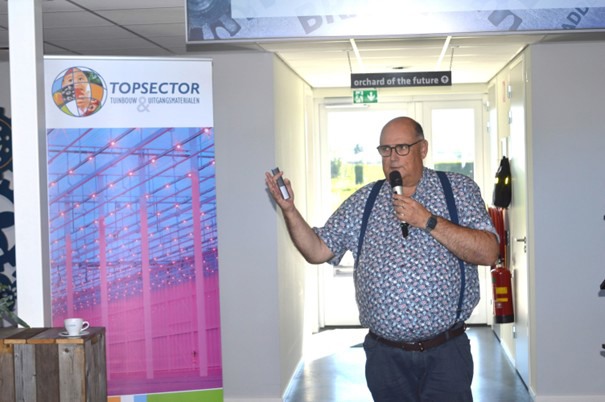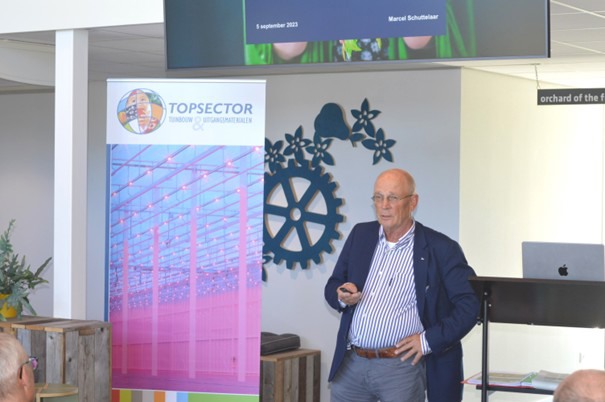Earlier this week, Topsector Tuinbouw & Uitgangsmaterialen organized an Impact2025 event in the Netherlands—the theme: 'High Nature vs High Tech' in soft fruit. Harry Schmeitz opened the afternoon and, with his overview of Dutch strawberry acreage development, set the stage for Vincent Deenen's presentation.
Vincent, Limgroup's CEO and a strawberry breeder, is at the forefront of major development in that area. He starts with a retrospective: "Whereas gathering sufficient food used to be all-important, cultivation's comprehensive nature has shifted to intensive farming. Production per m2 and knowledge development have, thus, increased tremendously."
"And, admittedly, so has the per ha footprint. There are far fewer producers feeding the (world) population. So if there's a kink in the (food production) cable somewhere, it has an immediate effect. With less time spent gathering food, most people can now engage in economic progress and knowledge development in all kinds of fields," says Vincent.
Limgroup plays in on this with its vision's wording: It wants to use its varieties to contribute to a good life on earth. Here, knowledge-intensive agriculture and horticulture are crucial.

How do things stand from a genetics perspective?
Vincent: "That's a good question. Cultivation technology has changed tremendously. Within no time, we've gone from open-field to tunnel, racks, and now greenhouse cultivation. Genetics are lagging, though. I don't know of any other crop with no different varieties for these various cultivation methods. As an industry, we're behind in that. The good news is that Limgroup is working very hard to catch up."
Limgroup propagates strawberries with various traits regarding fruit characteristics, resistances, production, plant traits, presentation, and breeding strategies.
Limgroup has lofty ambitions. Within five years, they expect to be a market and 'thought leader' in Europe. Technically, they want to achieve that by breeding F1 varieties. That means producing plants using specific breeding methods that combine in and cross-breeding. That results in evenly growing crops or animals with high yields and great uniformity. These, however, cannot reproduce themselves effectively.
 Harrij Schmeitz, Fruit Tech Campus' director.
Harrij Schmeitz, Fruit Tech Campus' director.
 Marcel Schuttelaar of Schuttelaar & Partners has a 'side-long view' of the sector; his company aims to commercialize the transition to a sustainable, healthy society.
Marcel Schuttelaar of Schuttelaar & Partners has a 'side-long view' of the sector; his company aims to commercialize the transition to a sustainable, healthy society.
The panel discussion began after Marcel Schuttelaar of Schuttelaar & Partners' speech and a coffee break. Farmer Henk and Marcel Dings participated and thoroughly enjoyed discussing High Tech versus High Nature. For years, Henk has been farming according to the 'High Nature' principle. He grows about 100 types of open-field vegetables on 1.5 hectares for regional restaurants and organizes activities to inspire others. Marcel Dings is a grower at Brookberries, which he and Peter van den Eertwegh own.
They have been growing strawberries at five locations since 1999. In 2007, Brookberries began using various technological innovations to cultivate top-quality strawberries as energy-efficiently as possible year-round. From mechanical cooling, vertical ventilation, and atomization to growing under hybrid and full LED lighting with changing color spectra and introducing a picking robot to meet specific market demands.
